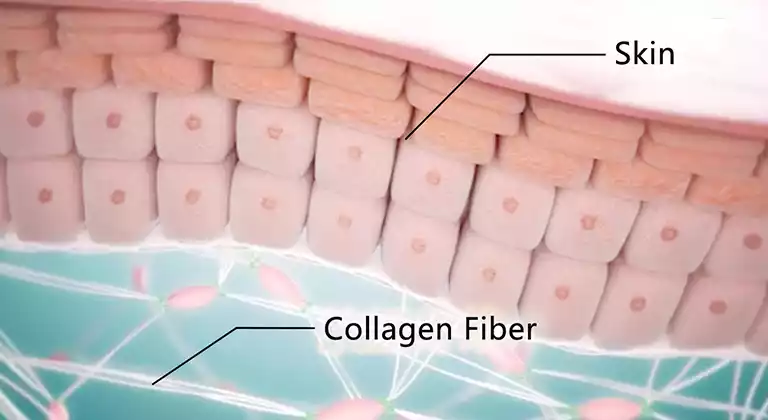Collagen is the most abundant and widely distributed protein in animal body. From invertebrates to mammals, collagen is present in all tissues: bones, skin, tendons, ligaments, cornea, blood vessels, etc. Small amounts of collagen are also found in muscles.
2/3 of inorganics and 1/3 of organics make up the bones. Inorganics are water, calcium phosphate and other ions such as magnesium, sodium, chloride, carbonates, etc. The organics are collagen, oil, other proteins, and collagen accounts for about 80%. Calcium attaches to collagen to make the bones hard but not gives them elasticity. It is collagen that gives bones elasticity and makes them less likely to break when subjected to forces.
Slaughterhouses usually produce large quantities of animal bones. A small part is used for retail to make bone broth, and most of the rest is used as raw material in gelatin factories. They are usually washed in hot water with strong mechanical force to remove the attached fat and muscle. Then the bones are chopped into walnut-sized pieces to be demineralized by acid.

The skin is the largest organ of mammals and is composed of the epidermis, dermis and subcutaneous tissue. Collagen is the most abundant protein in skin and it is mainly found in the dermis. It forms a network structure that gives the skin elasticity, disperses external forces and protects the body. In the production of skin gelatin, epidermis and subcutaneous tissue are usually removed to get the collagen-rich dermis.The quality of skin has a great influence on the gelatin and fresh skin is more likely to produce high quality gelatin than dry skin. Covalent cross-linking in older animals leads to reduced collagen solubility and makes it difficult to break down during processing. To reduce energy consumption and prevent excessive hydrolysis, skin of young animal is preferred for gelatin extraction.